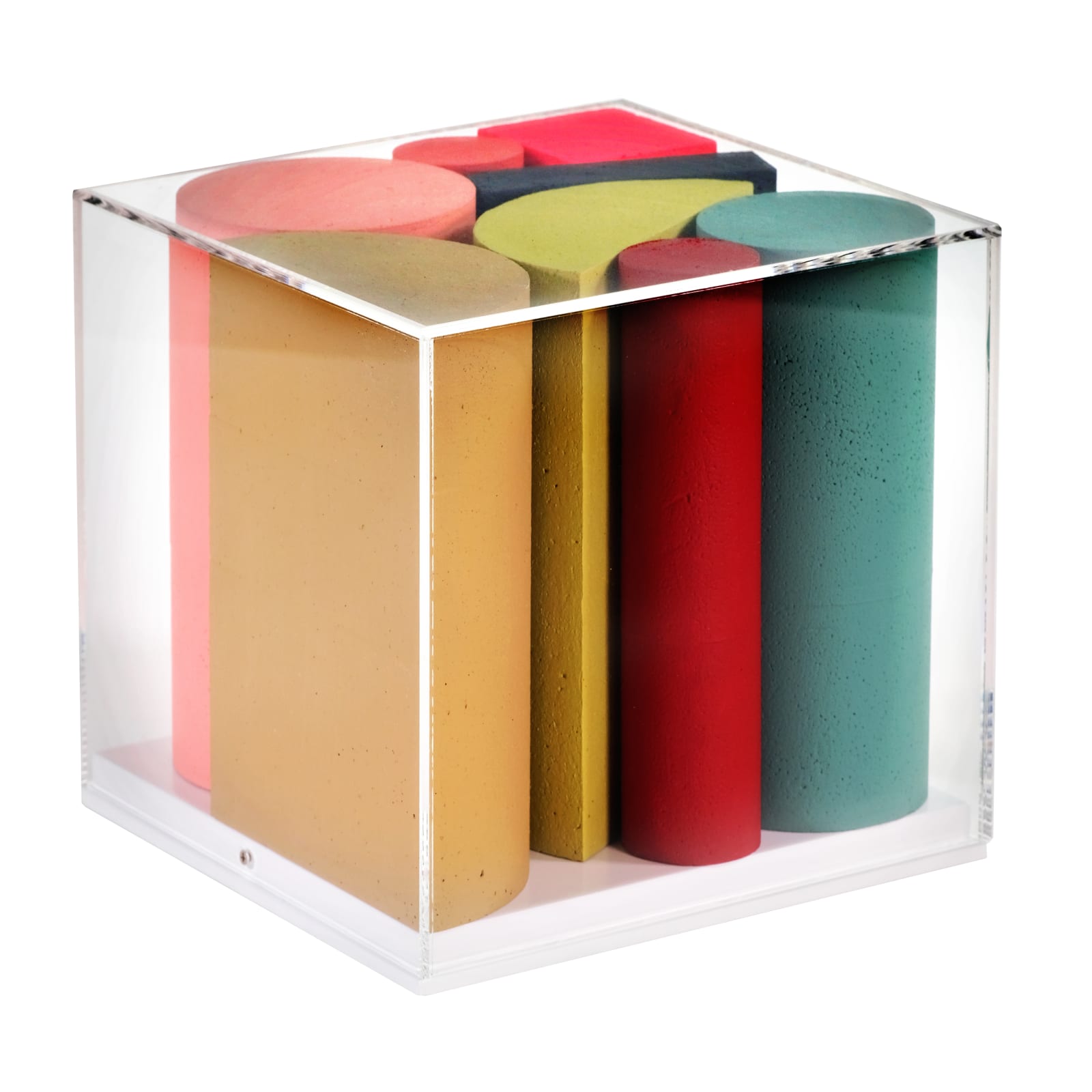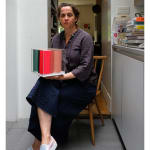Sophie Smallhorn
D', 2020
Perspex cube, polystyrene, acrylic Paint
20x20x20cm
Copyright The Artist
Sold
For Cure3, Smallhorn's sculpture D’ is a very personal dedication to her father who died of Parkinson’s disease, yet the composition and scale is very much in keeping with her...
For Cure3, Smallhorn's sculpture D’ is a very personal dedication to her father who died of Parkinson’s disease, yet the composition and scale is very much in keeping with her practice: “My work explores the relationship between colour, volume and proportion. This cube format was an opportunity to play with the confinement of shapes and the accidental voids created by the negative space in between the forms. It was interesting to explore the idea of this fragile disposable material being housed and protected with the box and how each form supports, props and holds the next”



